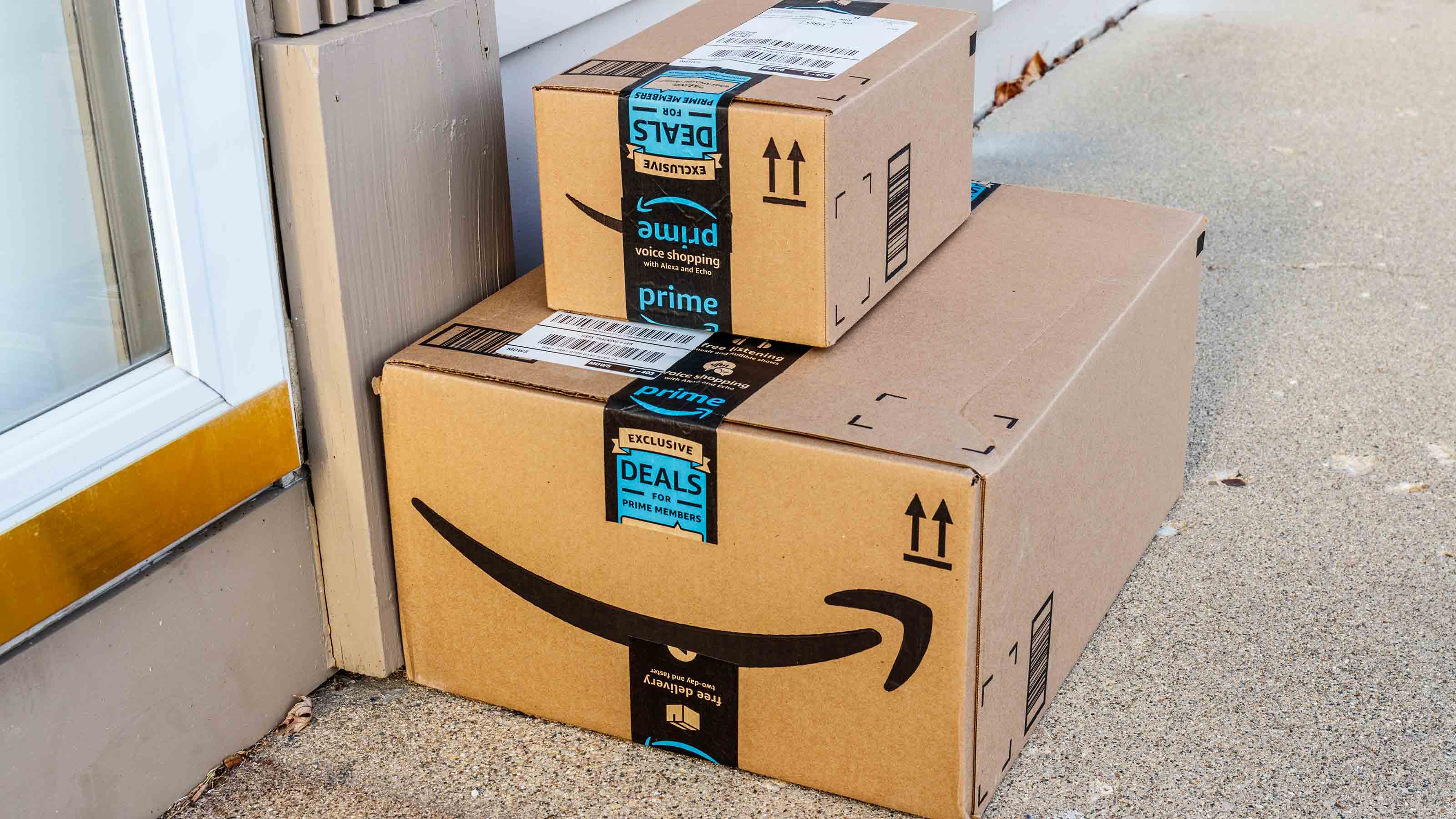Beat High Prices
Worried about inflation? Three families tell how they save thousands on food, gas and more.
Suddenly, saving is sexy and budgeting is back in vogue. All it took was gas at $4 per gallon and a 30% increase in the price of eggs, and now even families who were accustomed to spending freely (or using their credit cards) are trying to economize.
| Row 0 - Cell 0 | Inflation-Proof Your Portfolio |
| Row 1 - Cell 0 | Credit Cards That Pay You Back |
| Row 2 - Cell 0 | 5 Ways to Whip Inflation When You Shop at a Warehouse Club |
Prices have been rising right along with summer temperatures. At an annualized clip of 3.9%, inflation is running ahead of its long-term average of 3.4%. Kiplingers is looking for prices to rise about 4% over the coming year.
That's still a far cry from 30 years ago, when the rate of inflation hit 11.3% in 1979 and peaked at 13.5% in 1980. But it does mask even higher increases for things you buy every day. For example, the U.S. Department of Agriculture predicts that food prices will rise 5.5% in 2008, with double-digit percentage increases for bread, eggs and milk. And no one who drives will be surprised to learn that the price of gasoline has soared by more than 30% over the past year.

Sign up for Kiplinger’s Free E-Newsletters
Profit and prosper with the best of expert advice on investing, taxes, retirement, personal finance and more - straight to your e-mail.
Profit and prosper with the best of expert advice - straight to your e-mail.
High prices mean high anxiety for many consumers. In survey after survey, Americans say they are trying to spend smarter this year and sock away more money. Rather than spend their economic-stimulus checks, many people say they'll use the money to beef up savings accounts or pay off debt (or they'll earmark the cash for gas and other necessities).
Cutting back can be especially challenging for couples like Ron and Jenn Newman of Lindenhurst, N.Y., who face the additional costs of a new baby. Their daughter, Amanda, was born last October. Or like Marc and Jennifer Martinez of San Ramon, Cal. Marc, a digital-video editor, left his full-time job at a local television station last February to go solo. Or like Kurt Koppensteiner and his wife, Kristina Huddleston, of Louisville, Ky. Kurt was laid off from his banking job in January. Now, says Kristina, a lawyer, "I really watch the prices at the grocery store. I can tell you every time bananas go up 10 cents."
Minding their outlays for food and gas saves Kristina and Kurt more than $160 per month. That's $1,920 in annual savings -- more than this summer's federal tax-rebate check for most families. All three families have come up with creative ways to cut back without feeling deprived -- and they've even found money to put aside for college, retirement and future vacations.
Double Whammy
Children can be a real budget buster. For the Newmans, Amanda's birth and day-care costs, coupled with higher prices for food and gas, felt like "a double whammy," says Jenn.
But kids are also a source of tax breaks that let you pocket more money. For example, when Amanda was born, the Newmans became eligible for an additional withholding exemption, putting $3,500 of their income off-limits to Uncle Sam. In the 25% tax bracket, an extra exemption can boost take-home pay by $875 per year. (Use our easy Withholding Calculator to figure out your tax exemptions.
In addition, when it comes time to file their 2008 income taxes next year, the Newmans can claim a child tax credit worth $1,000 available for children under 17. That would reduce their tax bill dollar for dollar.
The Newmans get help with day-care expenses by taking advantage of the dependent-care spending account offered by Ron's employer, Eclipsys, where he works as an IT project manager. They can set aside up to $5,000 a year in pretax dollars to pay for day-care costs.
If you don't have access to a dependent-care account, you can use the dependent-care credit. It allows most working families to take a tax credit of up to $600 for one child, or $1,200 for two or more children, for qualified day-care expenses.
The Martinezes have come up with an even more economical solution for child-care expenses: They stagger their work schedules so they can care for their two children, Matthew, 8, and Mallory, 3. Marc, 48, is able to complete the bulk of his work at night, so he can mind the kids on weekdays while Jennifer works as a marketing representative. Then she takes over as primary parent in the evenings, giving Marc time to work.
[page break]
Budgets That Work
Quicken and Microsoft Money are still the 800-pound gorillas of budgeting software. But they're getting a run for their money from nimble new systems that are streamlined and easier to use. And people such as Ron Newman are creating simple systems of their own to track their spending.
| Row 0 - Cell 0 | Inflation-Proof Your Portfolio |
| Row 1 - Cell 0 | Credit Cards That Pay You Back |
| Row 2 - Cell 0 | 5 Ways to Whip Inflation When You Shop at a Warehouse Club |
After getting frustrated with the kinks in financial software, Ron, 38, switched to a spreadsheet that lists every payment he makes. He pays bills online through his bank's Web site but initials each row on the spreadsheet for confirmation. He tacks the spreadsheet to a bulletin board near the computer so he and Jenn always know where they stand.
The Newmans saved $10 a month by switching to a free e-mail account, and they avoid late fees on movie rentals by subscribing to Netflix. Squeezing out small savings helps them put $100 a month into a 529 college-savings plan, which they set up when Amanda was born. Ron and Jenn each contribute between 10% and 12% of their pretax income to company retirement plans, and they qualify for an employer matching contribution.
The high cost of living in California has forced the Martinez family to cut back on overall savings. But they, too, follow a budget. Jennifer checks their bank balance daily and maintains two checking accounts -- one for fixed costs and the other for variable expenses. Every month, the Martinezes put $100 into Matthew's 529 account (and add to Mallory's when they can afford it), and they contribute to their own retirement savings.
For a quick snapshot of your spending, use the simple budgeting tool at www.mint.com. You can sign up in less than five minutes by entering your e-mail address and bank and credit-card data. The site then downloads information on how much you spend every day and tags your outlays by category. So, for example, credit-card charges to Kroger or Safeway are immediately categorized as groceries.
To give you an instant glimpse of your spending habits, the site creates a pie chart with percentages based on your monthly or quarterly income and expenses. Every week you receive an e-mail that lists such items as your largest expenditures and tells you when bills are due.
Wesabe.com, another popular budgeting site, also helps users track spending and set financial goals. Its user forums are some of the best on the Web. If you want to establish preset spending levels, both Mint and Wesabe allow you to do so, as will any one of two dozen online or software-based financial-management programs. Just be ready to be chided by an e-mail alert when you exceed your limits.
Online system Mvelopes -- a virtual version of the old-fashioned method of putting money in envelopes earmarked for various expenses -- can be especially helpful. But there's a monthly fee, ranging from $7.90 to $13.20, and you can achieve the same result with a budget that you set up yourself either on a spreadsheet or handwritten in a ledger.
No Big Splurges
The purpose of budgeting isn't to put yourself into a spending straitjacket but to find those areas where you're leaking cash. Just a quick once-over of bank and credit-card statements and other bills can be enlightening.
When one mom did her due diligence with her sons' cell-phone bill, she discovered recurring monthly charges of $16 for game downloads and a program neither son recognized. When she called her cell-phone service provider, the representative quickly explained that the charges were from a third-party vendor, then deleted the fees and blocked future downloads -- saving the family nearly $200 a year in charges that might have gone unnoticed.
To shift more money to necessities such as food and gas, discretionary expenses are the first to go. For the Newmans, that means cutting back on dining out. "We used to order drinks, appetizers and an entree for each of us at our favorite restaurant," says Jenn, 36. "Now we save those big splurges for special occasions and order one entree and three appetizers to split."
In California, the Martinez family has shaved grocery bills by switching stores. "Safeway has more variety and lower prices, so I go shopping there," says Jennifer. "But for special occasions, I'll go to Whole Foods and suck up the high prices." The family's weekly Friday-night splurge is a take-and-bake pizza from a local chain that offers a $2 coupon. And they've put off major home-remodeling projects. "By the time we get to the granite countertops in the kitchen, they'll probably be out of style,"jokes Jennifer, 40.
As for vacations, they're skipping their annual trek to Hawaii. Instead, they've purchased a family pass to Disneyland for $379. Even though they'll have to pay for gas to drive from their home, which is about 400 miles away, they figure they'll spend only about one-third of what they usually spend on airfare and accommodations. And they're putting aside $200 a month toward future vacations.
Buy in Advance
One way to stay ahead of rising prices is to anticipate them. The Newmans, for example, booked their next vacation, to Cancun, Mexico, seven months in advance to save on airfare. Flying on Tuesdays cut the cost even further, so round-trip fare for the two of them will total about $1,000. They booked a room in a hotel where a friend owns a timeshare and were able to save 30% off the going rate.
Another way to ensure fixed costs is a prepaid cell-phone plan from companies such as AT&T's GoPhone, T-Mobile or Virgin Mobile. Virgin, for example, charges $35 (before taxes) for a plan that includes 300 daytime minutes and 1,000 minutes for evenings and weekends. Other advantages: You avoid pricey overage charges and cancellation fees (and you can stop children from downloading games and ring tones that come with additional charges).
Even the U.S. Postal Service is getting into the act with its Forever stamp, one of which will always be enough to mail a letter no matter how much postage rates rise. That saves you money, plus a trip to the post office to buy additional stamps.
Thinking even bigger and longer term, both the Newmans and the Martinezes are investing their children's college savings in stock mutual funds. With a historical return of a little more than 10% a year, stocks are still the best way to keep your money growing faster than inflation.
An alternative for your college fund is to purchase a prepaid college-savings plan, which allows you to buy future tuition at current prices for in-state public colleges and universities. About 18 states offer such plans; go to Saving for College for a list. They're worth considering -- especially if you can use the money to pay for other schools if your child chooses to attend a private institution or go out of state. There's also a prepaid plan for private colleges that's accepted at 270 school; go to Independent 529.
A classic inflation hedge is to lock in a fixed interest rate on debt, particularly your mortgage. If you have an adjustable-rate mortgage (and a good credit rating), consider switching to a fixed-rate loan. Recently, the rate on a 30-year mortgage averaged 6.1% nationwide.
[page break]
Back to Basics
Despite the big run-up over the past year, there is some good news on prices. Food and gas should moderate by next year, with an increase in worldwide grain output and oil supplies, plus slower economic growth in developed countries. Kiplinger's sees the price of gas falling to $3.45 a gallon nationwide by December.
| Row 0 - Cell 0 | Inflation-Proof Your Portfolio |
| Row 1 - Cell 0 | Credit Cards That Pay You Back |
| Row 2 - Cell 0 | 5 Ways to Whip Inflation When You Shop at a Warehouse Club |
In the meantime, take a page (and a coupon) from Kristina Huddleston and Kurt Koppensteiner, both 39. They figure that clipping coupons and sticking with smart shopping habits save them $100 a month on groceries. A household of four that uses coupons strategically can save up to 25% a year on its grocery bill without actually purchasing any less, reports a survey by the Toronto marketing firm ICOM. For Kristina and Kurt, strategically means not using coupons to switch to more-expensive brands offering one-time deals.
Kristina still scans the Sunday newspaper for offers. But like everything else nowadays, clipping coupons has gone digital. You can find printable grocery-store coupons by zip code at Coupons.com, CouponWinner.com and CoolSavings.com. To find coupons for specific brands or products, try Web-based mail services, such as Thecouponclippers.com, which will clip and mail coupons for a small fee.
You can also visit a manufacturer's Web site to find coupons for specific items. The Newmans, for example, signed up to get coupons via e-mail for disposable diapers and baby formula from Babies 'R' Us and Gerber, which saves them $10 or more a month. When we recently did a Google search for an "orange juice coupon," we turned up a printable, 55-cent coupon for Minute Maid Light.
Retailmenot.com is a virtual community where users post coupons and shopping tips, including where to get free shipping and bulk discounts on a gamut of products and services. Recent posts included links to e-coupons and coupon codes for National car rentals ($30 off a weekly rental) and Restoration Hardware (20% off all purchases).
Leaner Grocery lists
For Kurt and Kristina, a trip to the grocery store has become as well-choreographed as a ballet. Accompanied by a pouch full of coupons, they glide through the aisles with a list and stick to it. Other moves:
Evaluate store brands to see if using them sacrifices quality. Kurt and Kristina are willing to give up $5 fresh-baked loaves of bread and substitute packaged loaves for $2.50. But Kurt insists on his favorite brand-name cheese. Generic Swiss, he says, "tastes like plastic bags."
Weigh the benefits of buying in bulk. Kurt and Kristina usually don't because they don't have the storage space, and "there's a tendency to consume more if you have more," says Kurt.
Be alert for time-sensitive deals. Kurt and Kristina wait till after 2 p.m. to buy bagels at half-price for the next morning's breakfast.
When it comes to dining out, Kurt and Kristina have declared Starbucks off limits, and they host more dinner parties at home. Dining out tops the list of big splurges for many consumers. So when you do eat out, make a stop at a Web site such as Restaurant.com, where you can pay $10 for a $25 gift certificate at participating local restaurants.
Save on Energy
The simplest way to save on gasoline is to use less of it. Kurt and Kristina figure they save at least $60 per month on gas by consolidating all their errands into one trip a day. And they've stepped up their walking. Because they live in a "highly populated area with shops nearby, we've always walked a lot," says Kristina. "Now we do even more," often taking along their 4-year-old daughter, Sophia. And they don't hesitate to hop on the bus when it's convenient.
Public transportation can be a boon if you are able to take advantage of it. People who live within a quarter-mile of a rail system or one-tenth of a mile from a bus stop drive about 4,400 fewer miles annually compared with people who don't have access to public transit, says the American Public Transportation Association.
Jenn Newman telecommutes two days a week for her job in New York City, which not only saves money on transportation but also cuts her expenses for dry cleaning and eating out for breakfast and lunch. She takes advantage of an employer-sponsored program that lets her use pretax dollars to cover some commuting expenses. Her husband, Ron, reduces his driving costs by filling up with regular gas instead of premium.
In California, Jennifer Martinez, who works in sales and marketing, is fortunate to have the use of a company car -- a substantial benefit because she doesn't have a car loan or maintenance expenses. Still, she figures her fuel costs have skyrocketed over the past year, and she skips long car trips to faraway stores in search of elusive bargains. Marc's Toyota Sequoia will be paid off by the end of the summer, and the family plans to buy a more fuel-efficient vehicle next time.
When you do hit the road, good driving habits and a tuned-up vehicle can mean less pain at the pump. Speeding, changing lanes frequently and braking sharply cut fuel economy by 35%, according to tests by car-buying guide Edmunds.com. You can save up to $100 on gas each year by keeping your car's engine tuned and tires inflated to the proper air pressure, reports Fueleconomy.com.
Use the Web to sniff out the best gas deals in your area. GasBuddy.com and GasPriceWatch.com identify stations with the lowest prices. And gas-rewards credit cards give you some return for all the money you're spending at the pump.
Of course, saving energy isn't limited to using less gasoline. Even small improvements in your home's energy efficiency can add up. Switching to compact-fluorescent bulbs is one easy example. CFLs use 75% less energy than incandescent bulbs, and all you have to do is screw them in. True, they cost $7 a pop, but they last ten times longer than the Thomas Edisons in your sconces. Over its lifetime, one CFL can shave a total of $60 from your electric bill.
And that's just the beginning. For more easy and inexpensive ways to save hundreds of dollars a year on your energy bill, see Ways to Save and Conserveand How to Save on Everything.
The secret is to find little places to cut corners, says Jennifer Martinez. "Our major challenge is to keep doing the things we've always done, even though so many things are more expensive now."
| Row 0 - Cell 0 | 29 Ways to Conserve and Save |
| Row 1 - Cell 0 | How to Save on Practically Everything |
| Row 2 - Cell 0 | Best Strategies to Beat Rising Prices |
Get Kiplinger Today newsletter — free
Profit and prosper with the best of Kiplinger's advice on investing, taxes, retirement, personal finance and much more. Delivered daily. Enter your email in the box and click Sign Me Up.
-
 Could a Golden Visa Be Your Ticket to Retiring Abroad?
Could a Golden Visa Be Your Ticket to Retiring Abroad?Trump and DOGE are weighing a U.S. "Gold Card" that would let the wealthy emigrate to the U.S. for a fee. But golden visas have been around for years worldwide. Here's how they work.
-
 Running Out of Money in Retirement: Nine Steps to Reduce the Risk
Running Out of Money in Retirement: Nine Steps to Reduce the RiskQuit worrying about money and enjoy a carefree retirement. Sounds good, right? Well, if you follow these nine steps from a financial adviser, you could be on your way to that goal.
-
 Roth IRA Contribution Limits for 2025
Roth IRA Contribution Limits for 2025Roth IRAs Roth IRA contribution limits have gone up. Here's what you need to know.
-
 Four Tips for Renting Out Your Home on Airbnb
Four Tips for Renting Out Your Home on Airbnbreal estate Here's what you should know before listing your home on Airbnb.
-
 Five Ways to a Cheap Last-Minute Vacation
Five Ways to a Cheap Last-Minute VacationTravel It is possible to pull off a cheap last-minute vacation. Here are some tips to make it happen.
-
 How to Figure Out How Much Life Insurance You Need
How to Figure Out How Much Life Insurance You Needinsurance Instead of relying on rules of thumb, you’re better off taking a systematic approach to figuring your life insurance needs.
-
 Amazon Big Deal Days Is Coming! We’ve Got All the Details
Amazon Big Deal Days Is Coming! We’ve Got All the DetailsAmazon Prime To kick off the holiday season with a bang, Amazon Big Deal Days runs Tuesday, October 8 and Wednesday, October 9.
-
 How to Shop for Life Insurance in 3 Easy Steps
How to Shop for Life Insurance in 3 Easy Stepsinsurance Shopping for life insurance? You may be able to estimate how much you need online, but that's just the start of your search.
-
 Five Ways to Shop for a Low Mortgage Rate
Five Ways to Shop for a Low Mortgage RateBecoming a Homeowner Mortgage rates are high this year, but you can still find an affordable loan with these tips.
-
 Retirees, It's Not Too Late to Buy Life Insurance
Retirees, It's Not Too Late to Buy Life Insurancelife insurance Improvements in underwriting have made it easier to qualify for life insurance, which can be a useful estate-planning tool.